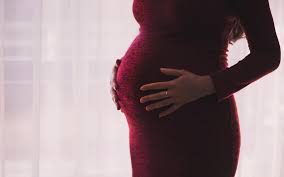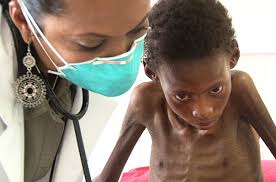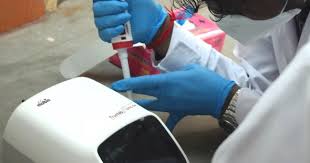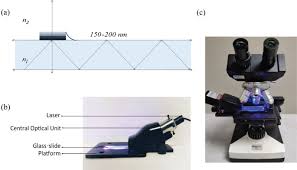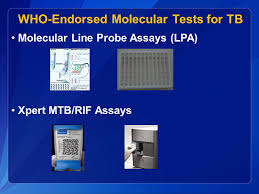Faizan is a 12 years male child who was referred to us due to unmanageable fever with features of shock.
At our centre there was no fever ,the child had not passed urine in last 12 ours,pulse was not palpable and
blood pressure was 80/60mmhg,tongue was dry but not coated,chest clear on auscultation,CNS -NAD,P/A Liver 2cm and Spleen just palbable.
On exploring the history,the child was having fever off and on for last 6 weeks being treated by local doctor,with high fever for last 4 days ,pain abdomen for last 3 days and vomiting sensation but no vomiting with generalised body pain for last 2 days.
There was no history of cough,cold,loose stools,or burning urination.No H/O repeated ear discharge,repeated skin rashes,repeated headache or abnormal body movement with loss of conciousness.
he was involved in wrestling competition for last 1-2 years and I suspect he was taking some muscle making drugs in the form of steroids.His weight was 50 kg and was looking like an adult.
He was given intravenous normal saline boluses to treat the shock and blood was withdrawn for investigations.
He recovered from shock in next 24 hours without catacholamimnes,started to pass urine normally ,pulse became palpable with a rate of 72/m and Blood pressure 1oo/70mmhg then 110/80mmhg
He was carrying some investigations reports which was as under
Hb 17gm with hematocrit 51%
TLC 1100 with 80%polymorph
Platelet count 24000/cmm
Malaria antigen negative
We thought,we are dealing with dengue shock syndrome,then reports from our centre came which was as under
After 12 hours of starting treatment blood picture was as below
Hb 14gm/dl with hematicrit 42%,TLC 9000,with 80%polymorph
Platelet 32000/cmm
He was on treatment with IVF ,iv ondensatron and iv pantoprazole
After 7 hours blood count was repeated and report was as below
Hb 11gm,TLC 8000 with 80% polymorph
Platelet count 32000/cmm
At this time other reports came which was as under
S.BIL 0.9mg,SGPT 1300IU,SGOT1350IU
S.SODIUM 122MEQ/L,S.POTASSIUM 4.5MEQ/L,BLOOD UREA 56mh/dl.S.CREATININE 1.3mg/dl
S,\.ALBUMIN 3.4GM,S.GLOBULIN 4.2GM,A/G 0.8
SERUM WIDAL 1:160
DENGUE IGM NEGATIVE
DENGUE IGG POSITIVE
MALARIA ANTIGEN NEGATIVE
CHEST X-RAY NORMAL
USG ABDOMEN bilateral mild pleural effusion,withj mild ascites with edematous gall bladder wall
so, these were consistent with viral infection,probably with dengue virus with salmonella infection
We started iv ceftriaxone
After 15 hours blood picture was as below
Hb 8gm with hematocrit 25%,TLC 4000,
Platelet 22000/cmm
AT this I requested some special investigation .and previous investigation repeated after 36 hours and report was as below
SGPT 3500IU,SGOT 3700IU,
S.SODIUM 129MEQ/L,S.POTALOODSSIUM4.5MEQ/LS.CREATININE 1MG/DL,BLOOD UREA 34MG/DL
S.ALBUMIN 2.4GM.S.GLOBULIN 3GM/DL,A/G 0.8
Platelet count 22000/cmm
Now the child developed fever which was recorded 101degreeF
At this time 6 units platelets was transfused after giving oral paracetamol ,when fever came down.
Child was feeling better and started to take orally
There was no bleeding from any obvious site throught the illness
Platelet count was repeated after 2 hours of transfusion
and it was still 22000/cmm
NOW SPECIAL REPORTS CAME WHICH WAS AS UNDER
S.TRIGLYCERIDE 165MG/DL
S.CHOLESTEROL 126MG/DL
S.FERRITIN 12000ng/ml
At this time the child was diagnosed as a case of
HEMOPHAGOCYTIC LYMPHOHISTIOCYTOSIS (HLH) probably due to Dengue virus infection.
HLH is a condition of uncontrolled activation of macrophages and lymphocytes with storming release of cytokines leading to multiple organ damages and consequent clinical manifestations.
It is of two types:
PRIMARY HLH
SECONDARY HLH
Primary HLH is due to congenital defects leading to uncontrolled activation of macrophage and lYmphocytes,whereas secondary HLH is due to various infective and non infective conditions,leading to uncontrolled activation of macrophages and lymphocytes.
PATHOPHYSIOLOGY
Macrophages which are derived from monocyets act as a presenter of antigens to the lymphocytes .
A subset of lymphocytes called NK cells (Natural killer cells) and CTL (cytotoxic T cells) are involved in killing and washing out activated macrophages from blood cells pool when their work is over and are no more needed.If NK cells and or CTL becomes less effective or ineffective in number and function, either due to congenital or aquired cause,there will be uncontrolled increase in number of activated macrophages ,uncontrolled activation of lymphocytes and histiocytes and storm like release of cytokines.This is the reason,this condition is also called as macrophage activation syndrome.
Cytokines released are interleukin1,interleukon6,interleukin10,gamma interferon and tumor necrosis factor alpha with some others interleukin 2 soluble receptor(CD25)
These cytokines creats aggressive inflammation throughout the body and there is engulfment of blood cells like RBC,WBC and Platelets by activated macrophage,lymphocyte and histiocytes .This is why, the condition is known as hemophagocytic lymphohistiocytosis(HLH).This is condition of aggressive but ineffective immune response which ultimately damages multiple host organs.
Hemophagocytosed macrophages demonstration in bone marrow is not necesary to diagnose this condition and moreover it is not pathognomonic.
ETIOLOGY:
PRIMARY HLH : There are 5 types of genetic mutations known till date .PRF and SAP mutations are important among them.
SECONDARY HLH:Activated by infective and noninfective conditions.
Among infections, the common causes which may trigger HLH often in the setting of primary or secondary immunodeficiency are
Viral-Epstein-Barr virus,CMV,Dengue virus
Bacterial-Enteri Gram negative rods ,Staphylococcus,Streptococcus,Mycobacterium tuberculosis
Fungal-candida albicans
Parasitic-Leishmania donovani,Plasmodium
Ricketsial-coxiella burnetti
NON INFECTIVE CONDITIONS:
Primary immunodeficiency diseases,secondary immunodeficiency due to any cause, some malignancies like leukemia and lymphoma, autoimmune diseases like systemic onset juvenile idiopathic arthritis,systemic lupus erythmatosus
CLINICAL FEATURES:The primary HLH usually present in infancy but may present later on at any age.The secondary HLH depends on the age of onset of inciting diseases.The disease present with fever,malaise,irritability,restlessness,vomiting and some times with respiratory distress..On clinical examination,one may find pallor,icterus,generalised lymphadenopathy,splenomegaly,hepatosplenomegaly,generalised body rashes which may be maculopapular pruritic or morbilliform rashes,symptoms of CNS involvement similar to meningitis or acute demyelinating encephalomyelitis may be seen.
ON INVESTIGATION;BLOOD– common findings are anemia,pancytopania,hyperbilirubinemia,increased transaminases,hypoalbuminemia,persistent hyponatremia,hyperferritinemia usually >10000ng/ml,hypofibrogenemia,hypertriglyceridemia and decreased ESR
ON RADIOIMAGING:CXR may reveal bilateral pleural effusion and USG abdomen may reveal edematous gall bladder with its wall thickening and ascites.MRI brain may show hyperintensities in gray and white matter along with supratentorial and infratentorial regions.
DIAGNOSIS:It is established by either demonstration of genetic mutations consistent with HLH which is available at few selected centres worldwide or fulfilling 5 out of following 8 criteria
1.Fever of more than 5-7 days
2.Splenomegaly:palpable spleen in the left subcostal region
3.cytopenia(at least 2 cell line affected-Hb equal to or<9g/dl : equal to or <10gm/dl for neonates,platelet<100000/cc,neutrophil<1000/cc
4.Hypertriglyceridemia(equal to or>265mg/dl) and or hypofibrogenemia(equal to or<150mg/dl)
5.Hyperferritinemia(serum ferritin equal to or more than 500ng/ml)
6.Increased level of CD 25 in serum(equal to or more than 2400U/ml)
7.Decreased or absent NKcell (Natural Killer cell) activities)
8.Demonstration of hemophagocytosis in bone marrow,spleen or lymph nodes
Many times, less than 5 criteria are met and even then the diagnosis is made .Moreover,in upto 70% cases, the initial bone marrow examination does not show hemophagocytosis ,which may be found later on.
TREATMENT:For primary HLH ,when genetic mutation is established the current recommendations are
Etopocyde
corticosteroids
Intrathecal methotrexate
These should be given even in presence of pancytopenia.These treatments are given to calm down the hyperimmunologic response so as to lessen the organ damage.The definitive treatment is Allogenic Stem cell transplantation.
For secondary HLH , treatment is aimed at treating and controlling the underlying infective or noninfective conditions along with supportive care.If there is any evidence of iatrogenic immunosuppression,the immunosuppressive agents are withdrawn and underlying infections are treated along with supportive care. Most of the time, for non infective causes or no known or untreatable infections ,Etoposide remains the drug of choice.Other agents are interferon and intravenous immunoglobulin.Etoposide has cytotoxic effect on macrophages ,thus decreases cytokine production and hemophagocytosis,limiting the organ damages.
PROGNOSIS:For primary HLH the prognosis is invariably poor with certain fatality. Even after appropriate treatment the disease may be suppressed to again flare up after some time and death occurs. The only cure is Allogenic stem cell transplantation which is being done at certain centres in the world including India.
For secondary HLH ,the prognosis may be excellent if infection is the causative factor,it is timely diagnosed and appropriatley treated if treatable.. For non infective causative factors the prognosis is poor with very high mortality.
REFERENCES:
1.Stephan Ladisch,Hemophagocytic Lymphohistiocytosis volume 3,Nelson Textbook of Peditrics,20e,2016,2488-2489
2.[Guideline] Henter JI, Elinder G, Ost A. Diagnostic guidelines for hemophagocytic lymphohistiocytosis. The FHL Study Group of the Histiocyte Society. Semin Oncol. 1991 Feb. 18(1):29-33. [Medline].
3.Pal P, Giri PP, Ramanan AV. Dengue associated hemophagocytic lymphohistiocytosis: a case series. Indian Pediatr. 2014 Jun. 51(6):496-7. [Medline].
4.Gupta S, Weitzman S. Primary and secondary hemophagocytic lymphohistiocytosis: clinical features, pathogenesis and therapy. Expert Rev Clin Immunol. 2010 Jan. 6(1):137-54. [Medline].
5.http://www.uptodate.com/contents/clinical-features-and-diagnosis-of-hemophagocytic-lymphohistiocytosis/abstract/20

